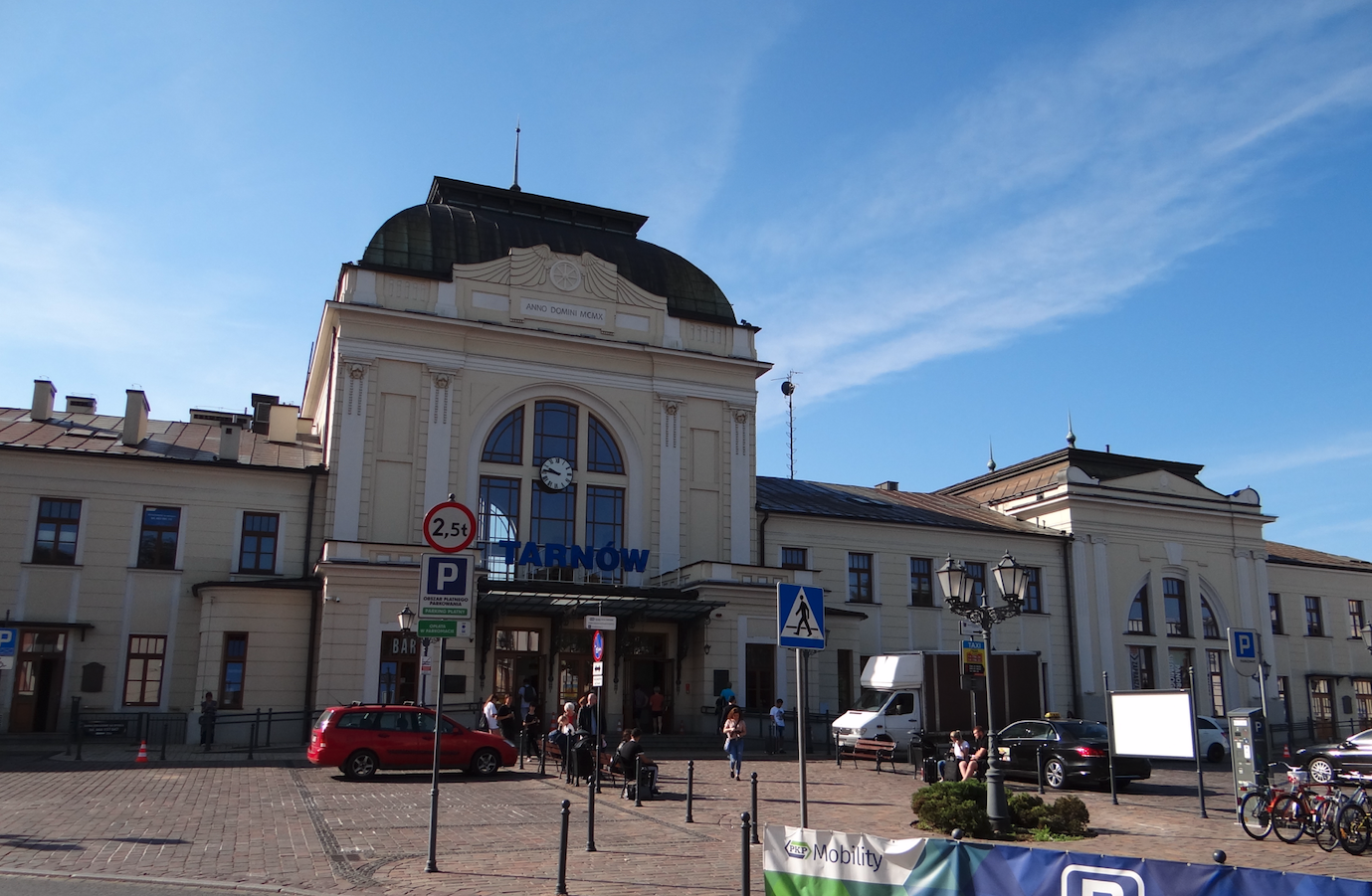Tarnów 2025-06-13
Railway junction in Tarnów.
Geographic coordinates: 50.005N 20.974E. Elevation 202 m.
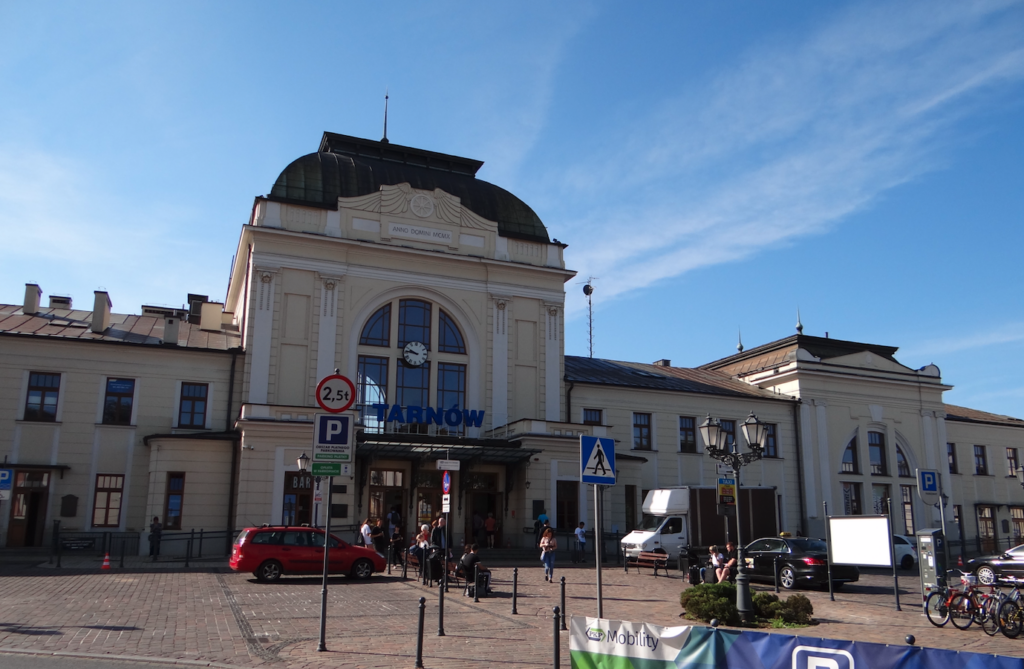
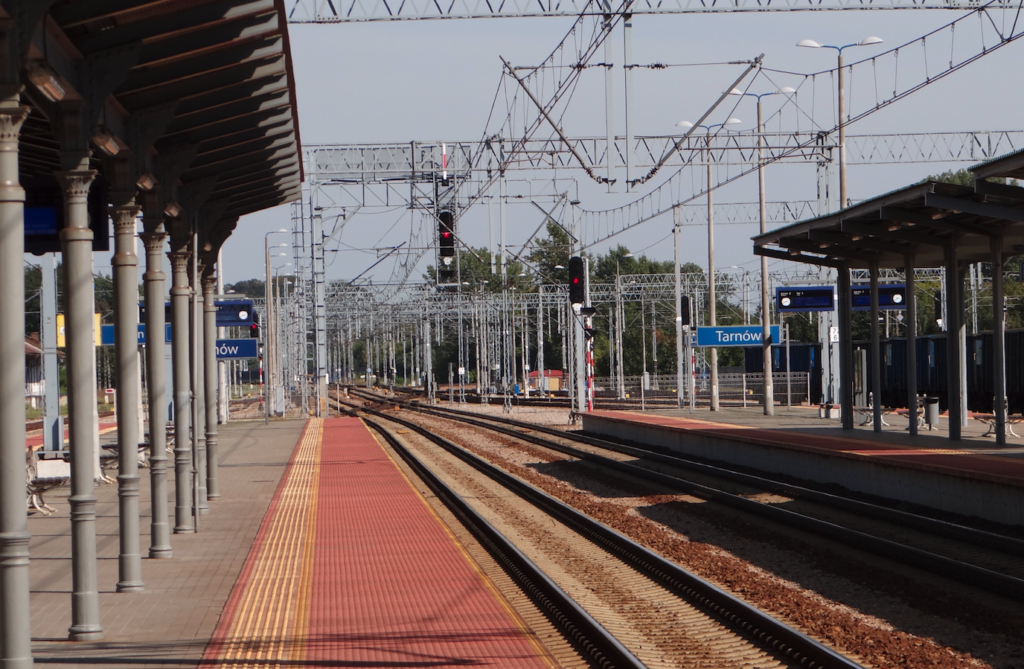
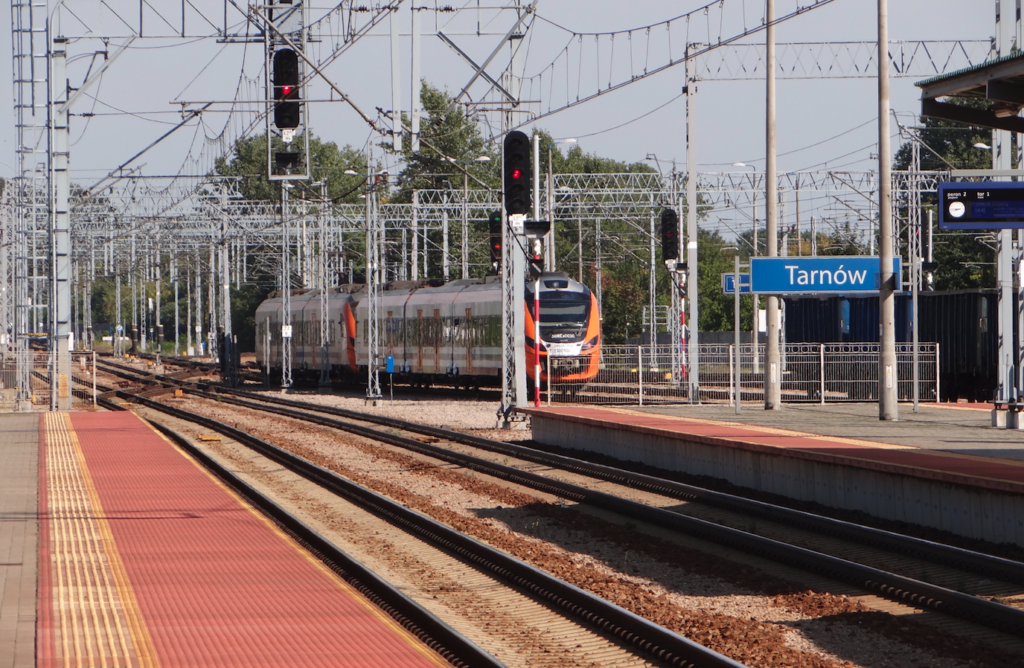
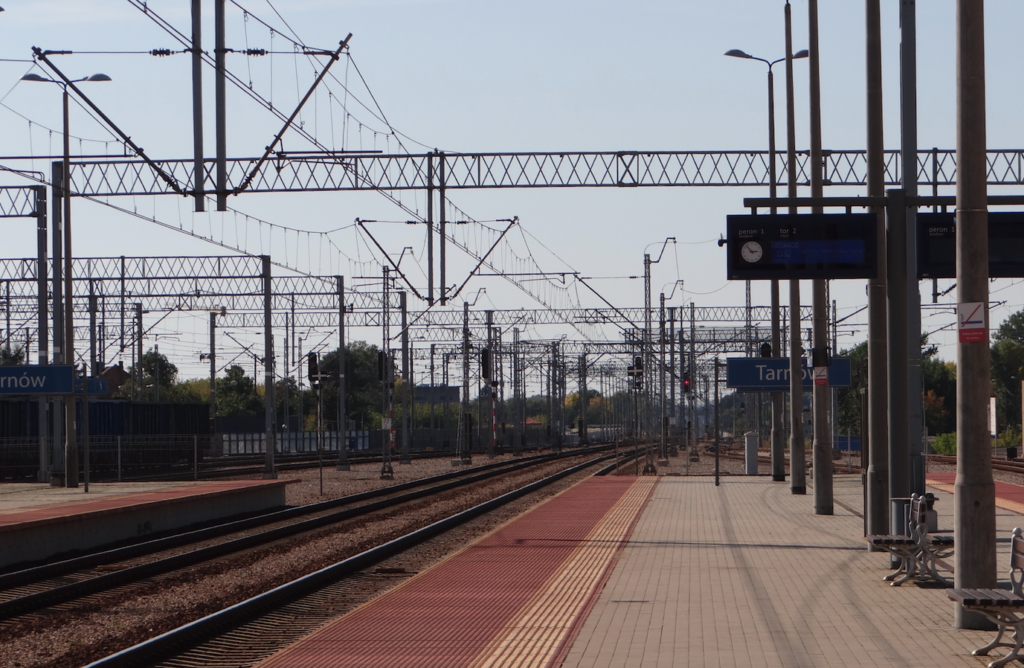
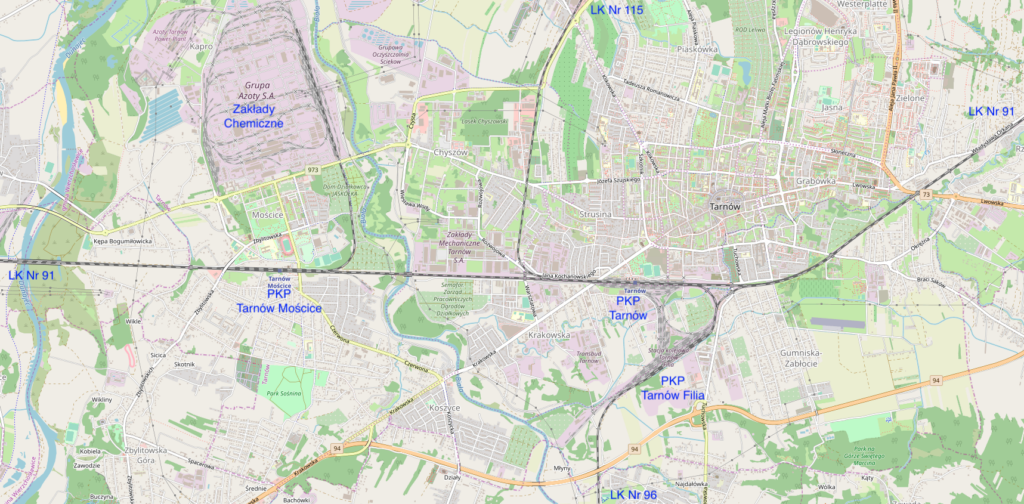
It is no coincidence that the city of Tarnów holds the title of the pearl of the Polish Renaissance. Tarnów’s Old Town has its own unique charm. Picturesque tenement houses, a stylish town hall and the Gothic Cathedral Basilica under the challenge of the Nativity of the Blessed Virgin Mary make the Tarnów center a place worthy of every tourist’s attention. There are several museums with valuable exhibits in Tarnów. It is easy to find a restaurant with good food in Tarnów. Good weather is almost guaranteed in Tarnów. The city boasts the title of the warmest in Poland. The railway station in Tarnów can boast one of the most beautiful railway stations in Polan
Railway history in Tarnów.
The railway junction in Tarnów, in the Małopolska province, is one of the most important communication points in southeastern Poland, both in the past and today. The railway has national and regional significance, and its history dates back to the 19th century. Tarnów was located on a strategic route from Kraków to Lviv, which ensured its rapid economic development.
The construction of railway tracks on the route to Tarnów began in 1853, as part of the construction of the Galician railway line named after Karol Ludwik (Galizische Carl Ludwig-Bahn). The railway station in Tarnów was launched in 1855, when a section of the Bochnia – Dębica railway line was put into service. Railway stations were built on the route in the following towns: Brzesko Okocim, Bogumiłowice, Tarnów, Wola Rędzińska, Dębica. Regular rail traffic was launched on February 20, 1856. Further construction of the railway line was temporarily halted by the effects of the Crimean War. The Crimean War was a war between the Russian Empire and the Ottoman Empire and its allies: Great Britain, France and the Kingdom of Sardinia, fought in the period 1853-1856.
Initially, only freight trains passed through Tarnów. Passenger trains started on February 20, 1856 and ran on the Kraków – Dębica route. There were two trains a day in both directions. The journey took over 4 hours. The train had a maximum speed of 35 km/h, and the average speed was 25 km/h. The train had one steam locomotive and 10-14 two-axle wagons, weighing up to 5,000 kg each.
In 1876, a railway line was launched from Tarnów to Nowy Sącz and on to Leluchów and Prešov. This line was part of the Transversal network and was built mainly for strategic – military reasons. The entire plan was approved by the government in Vienna on May 8, 1970. The length of the route is 145 km.
In 1906, another railway line was opened to Szczucin, i.e. in the north direction. The plan was approved in 1900. Work began in October 1905. In the summer of 1906, regular passenger traffic began. The length of the railway route is 49 km. At that time, Szczucin was developing dynamically. In 1905, a paved road from Szczucin to Dąbrowa Tarnowska was put into use.
In 1918, Poland regained independence. Rail traffic through the station in Tanowo systematically increased. In 1938, through Tarnów: on the Kraków – Przemyśl route, 15 pairs of trains ran, on the Kraków – Tarnów – Nowy Sącz – Krynica route, 10 pairs of trains ran, and on the Tarnów – Szczuci route, 5 pairs of trains.
In 1860, the first railway station building was built in Tarnów, which had a shelter for the passenger train. The building was single-storey. The building had a waiting room, restaurant, post office, railway service rooms and ticket offices (luggage, ticket – separately for each class in trains: 1, 2, 3).
In the Second Polish Republic, the railway infrastructure was expanded and modernized.
During the occupation, on June 14, 1940, the first transport of Polish prisoners to KL Auschwitz set off from Tarnów. There were 728 prisoners in the cattle wagons of the train.
The following railway lines currently run through Tarnów:
Railway line No. 91 Kraków Główny – Medyka is electrified, double-track. The line belongs to the European E30 routes. The line is 259 km long. In most cases, the travel speed is 160 km/h.
Railway line No. 96 connects the Tarnów station with the Leluchów stop. It is electrified in its entirety. This line is popularly referred to as “Kryniczanka”. The line starts at the goods station. In many sections, the Poprad River flows along the railway line, and the scenic provincial road No. 971 from Piwniczna Zdrój to Krynica Zdrój runs. The line is 146 km long. The maximum speed is 100 km/h, but there are sections with a speed of up to 70 km/h.
Railway line No. 115 is colloquially called “Szczucinka”. The line is single-track, non-electrified. It was put into service in 1906. Passenger traffic was suspended on April 3, 2000. Since then, the route has been used only for freight traffic. The speed on the route is 20-40 km/h. The line is 49 km long.
Railway line No. 115 requires additional discussion. The intention was to connect the cities of Kielce and Tarnów by rail. To date, there is no such direct connection. The lack of connection results from historical, economic and infrastructural conditions. The distance from Kielce to Tarnów is 110 km. There are sections: Kielce – Busko Zdrój (50 km) and Tarnów – Żabno (18 km). The further section Żabno – Szczucin has been dismantled or is impassable. In theory, it is possible to build the missing section Żabno – Busko, 42 km long, plus a new bridge over the Vistula is necessary. Let us recall that in 2021, a new, modern road bridge was put into use along DW No. 937, over the Vistula River. At that time, there was a chance to build a railway bridge as well. The reasons for this state of affairs are historical, and specifically the times of partition. The Muscovites and Austrians did not have the determination to build this connection. During the People’s Republic of Poland, the economy was managed by incompetent communists, and currently (2025) their descendants rule Poland. During the Second Polish Republic and the Polish People’s Republic, there were plans to extend LK No. 115 from Tarnów through Szczucin to Busko. But there were other priorities. In the 1990s, rail traffic began to decrease, which did not favor a return to investment plans. Local lines, such as Tarnów – Szczucin, were phased out due to low profitability. PKP PLK does not currently plan such an investment in its strategic programs.
The Tarnów railway junction is equipped with an important siding important for the Polish Chemical Industry. A single-track, electrified railway line to the Grupa Azoty chemical factory branches from the Tarnów Mościce station to the north. The factory was formerly known as Zakłady Azotowe in Tarnów Mościce. The factory was founded in 1927, on the initiative of Ignacy Mościcki, then President of the Republic of Poland and a chemist by education. The factory was built west of the center of Tarnów. In addition to the plant, there is now a residential district of Mościce, and its name comes from the name of President Ignacy Mościcki. The construction of the plants was an element of the industrialization plan for Poland, and at the same time a strategic project of the Second Polish Republic, alongside COP – Central Industrial Region and the Port of Gdynia. During the German occupation (1939-1945), explosives were produced here. After the war, the plants were nationalized and quickly rebuilt. Zakłady Azotowe in Tarnów became one of the largest chemical plants in the People’s Republic of Poland. At its peak, the plants employed over 10,000 workers. Then, Tarnowskie Azoty became the center of the newly established Grupa Azoty, one of the largest chemical groups in Europe. Currently, production is focused on fertilizers, plastics and chemical semi-finished products. There is also the Mościce Museum, which presents the history of plants and industry in the region.
Mościce Station.
Mościce Station is popularly called simply “Mościce”. The station is located at LK No. 91 Kraków – Medyka and local LK No. 987 Mościce – Mościce Azoty. In its history, the station was called Tarnów Dabrówka, and later Tarnów Zachodni. In 1991, the name Tarnów Mościce was returned, which recalls the name of the President of the Second Polish Republic. The station was established when the construction of the chemical plant began, i.e. in 1927. In 1927, a small wooden station building was built. In the 70s of the 20th century, a new station building was built in the modernist style. The station was put into operation in 1976, as a railway and bus facility. Address: Chemiczna Street. The facility was designed by the architect Stefan Wilkosz and the team of the Railway Design Office. The facility is characterized by a simple, functional shape, with large glazing. The interior has a mezzanine and a coffered ceiling. The interior and roof create elegant spaces, and the stairs, benches and lighting reflect the atmosphere of the socialist era. The highest passenger traffic at the station was recorded in the 70s, when about 3,000 – 4,000 people used the trains / day. The facility was entered into the register of monuments in 2020. Entering the station into the register of monuments protects the facility from its ill-considered demolition. Since 2012, the building has been unused and waiting for modernization to current needs. The city plans to create a Park & Ride interchange here. PKP PLK has put the facility up for sale for PLN 400,000. The revitalization project, which includes the adaptation of the station functions and integration with public transport, is the subject of talks between PKP PLK and the local government of the city of Tarnów.
In the period 2015-2017, during the modernization of LK No. 91, a general renovation of the track system and platforms was carried out at the Mościce station. Currently, there are two platforms and three platform edges. Passenger lifts were installed between the passenger tunnel and the platforms. The modernization of the track system increased the speed of trains to 160 km/h. There is also an unused bus station with eight stops at the station. At the station, in its eastern part, at Powstańców Styczniowych Street, there is PKP Energetyka; Zakład Południowy in Tarnów. Currently, rail traffic is controlled by the Local Control Center, with a computer system. In 2018, in the western head of the station, along Zbylitowska Street, the rail-road crossing was eliminated and replaced with a viaduct over the tracks.
Currently, 55 passenger trains stop at Tarnów Mościce station during the day (June 13, 2025). You could go to the following stations: Czechowice-Dziedzice, Dębica, Jasło, Katowice, Kraków Główny, Krynica-Zdrój, Nowy Sącz, Oświęcim, Piwniczna, Rzeszów Główny, Tarnów.
Tarnów Filia Station.
Tarnów Branch Station was also called Tarnów Przed-dworzec. The station was built in 1903 as a new freight point, located about 1,300 m in front of the main station, on the south side. In the period 1903-1918, the station was called “Vorbahnhof Tarnów”. The current name Tarnów Branch was given in 1945, after World War II. The station was electrified by April 1, 1966. Further electrification of the railway line to Tuchów was carried out in the period 1984-1987. In 1984, the station was modernized. The track layout was rebuilt and a new signal box “TF11” was built, and the “TF” signal box was modernized. The works lasted from March to December 1984. Passenger trains do not stop at the station. The station is located on railway lines No. 96 Tarnów – Leluchów and No. 609 to the Tarnów Wschód station. There is a hump at the station. The main group of freight tracks is located in the south-eastern part. There are 19 through tracks here.
On the station premises, at Rzeczna Street, there is a water tower, which was built at the turn of the 19th and 20th centuries. Currently, the tower is unused and its technical condition is good.
On the station premises there is a monument of technology; steam locomotive Ol49-72 with tender 25D49-63. The locomotive was built in 1953, Feliks Dzierżyński Locomotive Factory, Chrzanów (FABROK), Factory No. 3186. The boiler was manufactured; Sosnowieckie Zakłady Budowy Kotłów. The locomotive worked in MD Katowice, MD Łazy, MD Strzemieszyce, MD Przeworsk. In 1987, the locomotive was crossed out of the state. As a monument, the locomotive was painted in 1992 and 2012.
The locomotive shed was built in the late 19th century and was modernized several times. Steam locomotives were serviced here. For 60 years, diesel locomotives were serviced here, and then also electric locomotives. Currently (2025) the locomotive depot serves the following locomotives: ET41, EU07, SM42.
In the southern part of the station, at Rudy Młyny Street, there is a group of impassable tracks, two cranes, a storage yard and a complex of railway buildings. The facility was used to service wagons. In 2012, the facility was partially used, and since 2020, it has been unused. The tracks here are not electrified. On the station premises, many former railway facilities are used as shops, wholesalers and workshops.
An interesting, because rarely seen element of the track system at the station is the track circle, which allows trains to bypass. The circle connects all railway lines at the Tarnów junction.
On the station premises, Tuchowska Street, in the eastern part of the station, there is the Church of the Holy Trinity. The temple is wooden and was built in the period 1595-1597. There was a village here called Terlikowska. The temple is late Gothic, wooden, of log construction. The interior has polychrome made at the beginning of the 20th century. Since April 25, 1970, the Temple has been on the list of historical monuments, under the number A-187.
Currently, rail traffic in the Tarnów junction is directed by the Local Control Center (LCS), which is located at the Tarnów station, near the railway viaduct, along Krakowska Street.
Written by Karol Placha Hetman
